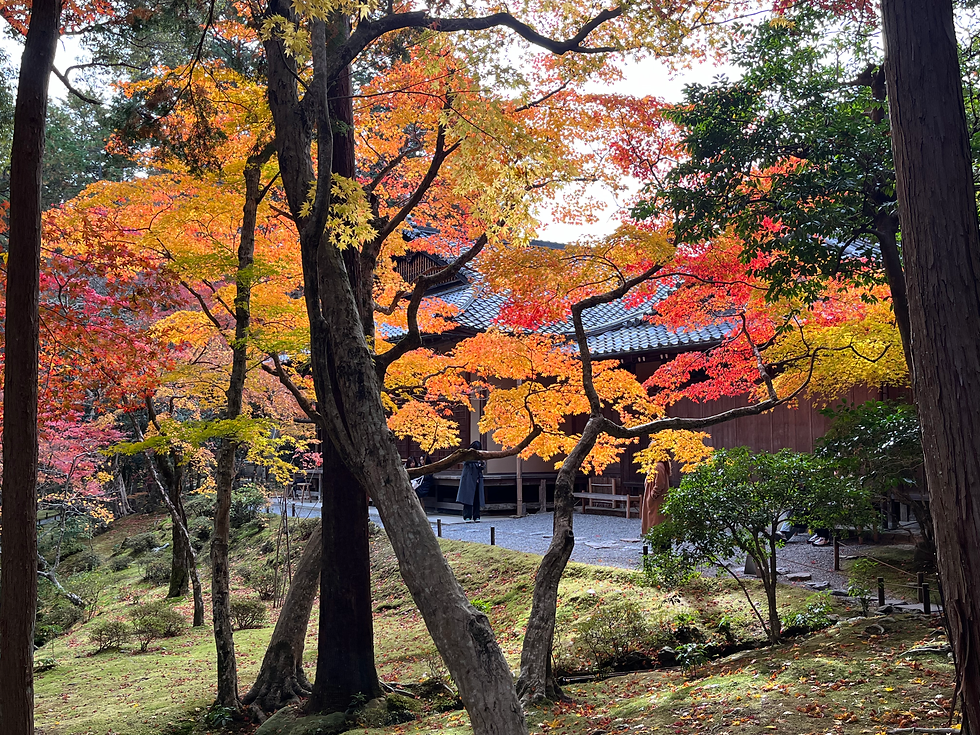
I've recently returned from Japan and found it a challenge to readjust my eyes to the dim grey skies of London in December. During my latest trip, I was captivated by the intensity of Japan’s light and the vibrant colours it brings to life—so much so that I couldn’t help but notice the remarkable parallels with ukiyo-e woodblock prints. It struck me that ukiyo-e artists weren’t merely inventing more vivid colours; they were striving to capture the natural brilliance of Japan’s landscapes. This led me to ponder why Japan’s light is so uniquely strong and how it shaped their art. After all, Van Gogh’s paintings were dark and sombre until he encountered the bright light of southern France, and would Matisse’s dazzling works have existed without the radiance of the Mediterranean? Light is a crucial element for artists everywhere, and in Japan, it has played an extraordinary role in defining its artistic traditions. This luminous clarity is not only a natural marvel but also a defining element in the country’s iconic woodblock prints, particularly those of masters like Hokusai and Hiroshige.


Japan’s Geography: A Land of the Rising Sun and Light
Japan’s location on the globe plays a key role in its distinctive light. Positioned between 24° and 46° north latitude, Japan lies in a temperate zone, similar to Southern Europe (Tokyo is in fact on a similar latitude to Tunisia). The country benefits from:
Proximity to the Pacific Ocean: Surrounded by water, Japan enjoys clean, salt-scrubbed air, especially in coastal and rural regions. This reduces atmospheric haze, resulting in brighter and clearer skies, particularly in the autumn and winter months.
Mountainous Terrain: Japan’s topography, dominated by mountains, means that sunlight often streams through valleys or reflects off snowcaps, intensifying its effect. The clear delineation between mountain and sky creates dramatic vistas that are perfect for artistic representation.
Seasonal Extremes: Japan’s four distinct seasons each have their own light qualities, from the soft, diffuse glow of spring to the sharp, crisp brightness of autumn. Autumn, in particular, is famous for its intense reds and yellows, brought to life by the clear sunlight.
Climatic Conditions: The combination of Pacific air currents and seasonal monsoons often results in skies that are remarkably clear after rainstorms, a phenomenon famously captured in prints like Hiroshige’s Sudden Shower over Shin-Ōhashi Bridge and Atake.

How This Light Inspired Woodblock Prints
The luminous quality of Japan’s light directly influenced the aesthetics and techniques of ukiyo-e woodblock prints. Artists adapted their work to reflect this vibrant environment.
1. The Use of Bokashi
Bokashi, or colour gradation, became a hallmark of Japanese woodblock prints. This technique mimicked the subtle transitions of light in Japan’s skies:
Hokusai’s Fine Wind, Clear Morning features a glowing red bokashi sky, symbolising a crisp, clear dawn over Mount Fuji.
Hiroshige’s Evening Snow at Kanbara uses a soft gradient to convey the fading light of dusk.

2. Emphasis on Weather and Light Conditions
Ukiyo-e artists often depicted specific weather phenomena influenced by Japan’s geography, such as:
The luminous skies after rain, as seen in Hiroshige’s Clear Weather after Rain.
The interplay of sunlight and mist in mountain landscapes, inspired by Japan’s many high-altitude regions.
3. Vivid Seasonal Colours
The bright sunlight intensifies Japan’s seasonal colours, from the pale pink of cherry blossoms to the fiery red of autumn maples. These vibrant hues are prominent in ukiyo-e prints, where artists used natural pigments to reflect the radiance of their environment.

4. The Clarity of Detail
The sharpness of Japan’s light allowed artists to emphasise intricate details in their prints, from individual leaves on a tree to the reflection of Mount Fuji in water. The clarity of light informed their compositions, ensuring that even complex scenes remained visually harmonious.


The Legacy of Light in Japanese Art
The exceptional light of Japan is more than a natural phenomenon—it is a cultural cornerstone. It shaped the way artists like Hiroshige and Hokusai viewed the world and translated their experiences into timeless works of art. Their prints capture not only the landscapes of Japan but also the luminous spirit of the country, reflecting the way sunlight dances on its mountains, waters, and skies.
By understanding the geography and light of Japan, we gain a deeper appreciation of the artistry behind these prints. They are not just images but windows into a world shaped by a unique and brilliant natural light.

Comments